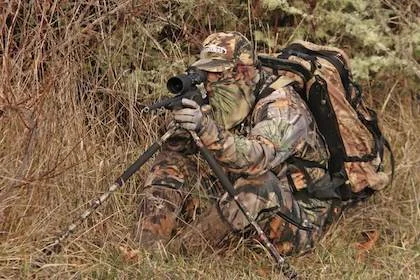Predator Hunting Techniques: Predators are nature’s ultimate hunters, displaying remarkable agility, stealth, and cunning. Whether they prowl the vast savannahs of Africa, the dense forests of South America, or even our own backyards, predators have perfected the art of hunting. In this article, we will explore the various techniques employed by predators, showcasing their strategies and instincts that make them such formidable hunters.
Predator Hunting Techniques and Stalking:

The Silent Approach Stalking is a fundamental technique used by predators to get within striking distance of their prey. By moving slowly and stealthily, predators minimize noise and visibility, ensuring their presence remains undetected until the critical moment. They utilize cover, such as tall grass or bushes, to conceal their approach and take advantage of their natural camouflage. Big cats like lions and leopards are renowned for their stalking prowess, patiently closing in on their unsuspecting targets before launching a lightning-fast attack.
Ambush:
The Element of Surprise Predators often employ ambush tactics, capitalizing on the element of surprise to catch their prey off guard. They choose strategic locations, such as waterholes or game trails, where prey animals are likely to frequent. Patiently lying in wait, predators remain motionless for extended periods, blending seamlessly with their surroundings. When an opportune moment arises, they unleash a sudden burst of speed, taking their prey by surprise. Crocodiles and alligators are masters of the ambush, lurking just beneath the water’s surface before lunging at unsuspecting animals that venture too close.
Pack Hunting:
Unity in Numbers Many predators, including wolves, hyenas, and African wild dogs, hunt cooperatively in packs. Pack hunting is a highly coordinated effort that allows predators to target larger, more formidable prey. By working together, pack members can surround their prey, cut off escape routes, and exhaust their quarry through relentless pursuit. They communicate through vocalizations and body language, maintaining group cohesion and executing well-choreographed attacks. Pack hunting exemplifies the power of teamwork in the animal kingdom.
Persistence Hunting:

Outlasting the Prey Persistence hunting is a unique technique employed by humans and a select few predators, such as cheetahs and wild dogs. This method relies on endurance rather than speed. Predators that specialize in persistence hunting have remarkable stamina and can maintain a steady pace over long distances. They pursue their prey relentlessly, exploiting the fact that most animals cannot maintain top speed for extended periods. By wearing down their quarry through sheer persistence, these hunters secure their meal.
Aerial Hunting:
Taking to the Skies Some predators have evolved the ability to hunt from the air, offering a different perspective on the art of pursuit. Birds of prey, like eagles, hawks, and falcons, utilize their keen eyesight and powerful talons to swoop down on unsuspecting prey from above. These avian hunters often spot their targets from great distances, soaring high in the sky before descending with precision and incredible speed. Aerial hunting demonstrates the versatility of predation techniques in nature.
Predators employ a range of hunting techniques tailored to their specific environments and prey. From the stealthy stalk of a lion to the aerial assault of a falcon, each strategy showcases the adaptability and ingenuity of these formidable hunters. By studying these techniques, we gain a deeper understanding and appreciation for the intricate balance of predator-prey relationships in the natural world. Whether on land, in water, or soaring through the skies, predators embody the epitome of hunting prowess.
Read Also: Carp Fishing Tips and Tricks
![]()






2 thoughts on “Predator Hunting Techniques”